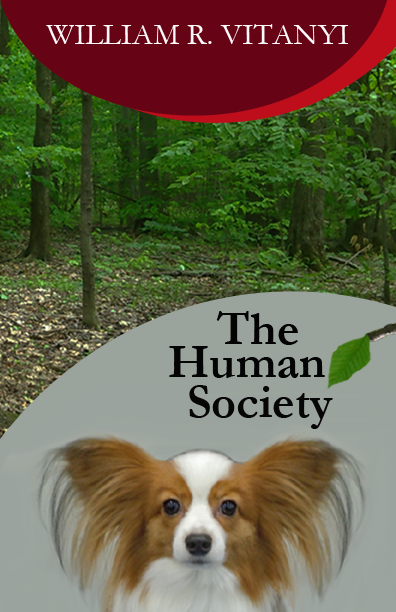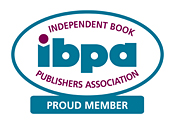Research

The research component of the ROC method consists of two distinct parts, market research, and topic research.
Market research encompasses efforts to determine the commercial viability of the proposed book, and to identify specific groups and organizations that will form the basis of future marketing campaigns.
Topic research seeks to acquire facts about the subject area of your book, with a view to increasing the veracity of your work, or producing new directions in your writing.
Both areas are covered in more detail below.
Market Research
When you finish writing your book you will want to sell it, and whether you self publish or get published by a mainstream imprint you will have to promote your book if you hope to achieve sales. By doing market research before you start writing you can identify groups for later promotion, determine if there is a market for your book at all, and even tailor some of your writing for later marketing efforts.
This up front market research may indicate that your original idea wouldn't impact enough readers to be commercially viable, but perhaps with a tweak or two it would. Striking a balance between your artistic vision and the desire for sales can be difficult, but facing the reality of unfavorable market conditions is best done before the book is written.
The key is to identify groups of humans with an interest in your subject matter. Such groups are often found on social media, but there are also reader groups who meet online or physically, associations, or even clubs or organizations that specialize in some aspect of your proposed dog book that you perhaps had not yet thought to include. As you search using relevant keywords, the yellow pages, or word of mouth, it is important not only to identify relevant groups, but to consider how to reach them. Keep records of searches and results, especially concerning contacts.
If you are technically inclined, consider building a database using Access or some other tool. This will be helpful if you later decide to publish a newsletter, for mail merge purposes, or simply to form a directory of book contacts. Such a database can even include columns for contact type, geographical region, or other filters, useful for targeting markets for specific campaigns.
Topic Research
Topic research is about facts. Whether you are writing a canine novel, a breed tome, or a collection of dog poems, more data is a strong ally. .
Think of yourself as a miner, seeking out nuggets of information. These nuggets can be simple facts, which support some aspect of your book, or can be more complex, such as a little-known anecdote about a famous dog. Either way, by finding these nuggets you both inform yourself and make your book more interesting and informative for the reader. The Internet is not the only source for topic data. For any dog book there are often expert sources nearby, perhaps as close as your neighborhood. Nearly every region of the country has a dog shelter, club, or other canine organization. Depending on your information needs, consider a visit. Tell them about your project. They may be willing to help your research in unexpected ways.
Online experts are often an email away. Be bold. Reach out to authors or other prominent professionals for advice on your specific work. You will often be surprised at how helpful such resources will be. If possible, go to a dog show or other canine event. Keep copious notes. For example, when writing The Human Society I attended the Erie Kennel Club All Breed Dog Show in Erie, Pennsylvania. The information gleaned was invaluable, including data about the dog show layout and operations, and thoughts and opinions from dog breeders and attendees.
You may know a lot about dogs. You may know more about dogs than most dogs. The most important thing to know, however, is that you don't know everything. Accuracy in unexpected details not only lends credibility, but provides insights to your readers and adds interest to the story. Seek nuggets that would impress even an expert.
Incorporate found details into your story. These discoveries sometimes have the power to influence your entire story line. For example, before writing this article I had no idea that English painter William Hogarth included his pug, named Trump, in his 1745 self-portrait. Is this previously unknown fact relevant to my writing or marketing? Too soon to tell.
Too soon to tell.
Organization

Organization is the second pillar of the ROC method, and is intended to alleviate the chaos that occurs in the process of writing a dog book. It consists of Documentation and Planning. Documentation refers largely to note taking. As you conduct research, make changes, or initiate marketing campaigns, maintaining a written history is critical.
Planning is about structure, and includes outlining as well as folder and file structure design.
Both elements are covered below.
Documentation
The human brain is not perfect when it comes to remembering great ideas, website addresses, or even the three elements of the ROC method. Fortunately there is a technique that helps to overcome this limitation.
Note taking.
Of course, most humans would mutter, yet note taking is one of the most neglected aspects of dog book writing, largely because of another human failing: overconfidence. The notion that we will remember something simply because it recently occupied space in active memory is disproved on a regular basis. To address this shortcoming two questions must be answered: what to document, and how to record the data.
Handwritten notes are often easier to compile and can include diagrams or other pictoral representations, while writing on a computer can be faster, and makes searching data easier. A blend of handwritten with later transcription has the benefit of redundancy, and even oral recording is an option, but whichever means is most comfortable and effective should be the guide.
What To Document
As to what to document, too much can be as bad as not enough. It takes time to read through notes. Effective note taking is the key, fleshing out useful information while discarding the useless.
One strategy is to move apparently superfluous notes to an archive document, like pulling weeds in a garden. In some cases you may have to mine the garbage heap for an accidentally discarded tidbit, but at least it will still exist somewhere. After your book hits the bestseller list you can always purge the truly unwanted.
Be consistent in your note taking method, and don't assume you will remember the details later. Equally important to taking the notes is finding the nuggets later when you need them. This relates to Planning, as described below.
Organization: Planning
Planning includes two elements: the story line, and the folder and file structure. The story line is a structural framework that allows you to maintain a visual representation of the ebbs and flows of your story's progression within the planned confines of your book's length. For example, if your research indicates that the ideal book length for your work is 80,000 words, then important events could occur at or around 20, 40, and 60 thousand words. Other milestones could be planned in between. This helps in two important ways.
First, it helps with the ebb and flow, building that roller coaster effect that keeps readers engaged. Second, it lets you know what you are writing towards. Knowing your next destination helps you focus on the how. Knowing your subsequent destinations help you maintain a strong foundation, and can even help increase the complexity of your work. It changes how you think about what is happeining, and promotes writing discipline.
To create the story line, first estimate how long your book will be. Consider similar works by successful authors as a guide. Create a story line, an actual line on a piece of paper, or vertically as an electronic spreadsheet, with a starting point of zero and an end point of your estimated page count. Depending on your topic and writing style, add incremental word counts at equidistant intervals (see image of spreadsheet below).
This is only a guide. Obviously every scene you write will not be exactly the same length. The word counts represent important milestones in your story. Some may start or end chapters. At this point it is devoid of content. That will change.
With your blank story line staring you in the face, write in events. It's okay to jump ahead. In your vision the halfway point may be when the St. Bernard rescues the injured Beagle, so write it in. What must happen before that? Ideas will pop into your mind unexpectedly, so bring your living outline with you everywhere. A pencil works best.
Before you know it your story line will be filled with events, milestones, and even character appearances and departures. Initially there will be many gaps, but eventually it will fill in. Once it is resonably complete, subject to constant modification, you will have a blueprint of your book that lets you always know what you are writing towards.
If you use a spreadsheet to create the story line vertically, you can print out the most current version and bring it with you when you are away from your computer. A pencil then becomes your best friend, as you insert ideas as they occur to you. When you get back to your computer, just update the spreadsheet with the results of your latest brainstorm. Before you know it an outline of your entire book will appear before your eyes.
The Story Line

The Story Line can be horizontal or vertical. A spreadsheet is ideal for this purpose. Print it out for e-Free operations.
Folder and File Structure
During the market research phase of your book project the goal is to accumulate masses of data. However, the more successful you are the less useful this information becomes unless you are well organized. The best way to approach this is through a well defined folder structure on your computer. Although this may seem painfully obvious, it is also woefully neglected.
Imagine that you need to quickly transfer all of your book project files, including research, to a different computer. Could you find all the bits and pieces that you have accumulated after months of effort?
With a well planned folder and file structure you could transfer everything and never miss a beat. Operations could resume on a new computer, and you would know how to find everything. Start with a parent folder, and build a meaningful structure beneath it. Cloud computing can help, but personally I am more comforted by terrestrial structures.
Within the folders and subfolders you can create documents with descriptive filenames, making it an easier matter to find details that you know to exist regarding some story aspect. The key to success is to implement this strategy at the beginning of your research efforts, and to consistently follow whatever organizational scheme you devise.
The key to success is to implement this strategy at the beginning of your research efforts, and to consistently follow whatever organizational scheme you devise.
Creativity

The third pillar of the ROC method is Creativity. Although creativity is infused into virtually everything you do in relation to your dog book, in this case we are talking about the act of writing, which includes two elements, Instantiation and Enhancement.
Instantiation means to create something from nothing, and refers to the writing that comprises your dog book. It is authoring.
Enhancement concerns improvements to work that you have already created, and involves the process of editing.
Both components are described below.
Creativity: Instantiation
Instantiation of a dog book encompasses both the urge and ability to create, and the act of creation itself. In addition, writing is a powerful consumer of energy, its ebb and flow sometimes a hindrance, sometimes an ally. You can impact this with positive personal habits, such as getting enough sleep, eating healthy, exercising, and practicing correct posture.
Coffee helps.
Eventually you come face to face with the blank page. When it is time to start, write for one hour, and write as fast as you can, which on some occasions will be quite slow indeed. Other times your fingers will be unable to keep pace with your mind. Sometimes you will have to pause to do more research. Who knew wolves bred for life.
Your first draft will have many mistakes. Fix the occasional spelling error, and if a better grammatical structure occurs to you, by all means change it. Otherwise, let the story quickly pour from your frontal lobe onto the page, then add another page, and keep doing it, every day.
End each session with a note indicating where you will resume the story. Word count is important. It is a measure of effort, as well as a goal. Some writers achieve several thousand words a day, others far less. It depends on your typing speed, your thought process, and how much time you can commit to your craft. It is surprising how such a goal sometimes extracts the next paragraph or page from your brain. Often the decision to write those next 100 words results in another thousand words of inspired prose.
Keep writing until the first draft of your story is finished. Along the way you will undoubtedly spend time with your Story Line, as you discover dead zones where something fun needs to happen, or new plot twists render some previous scene illogical. Just keep going. Eventually you will finish.
Then get ready to change everything.
Creativity: Enhancement
Editing is the rinse, repeat part of creativie writing. While your first draft should emerge quickly, each editing pass will be a more deliberative process. At first you will tend to focus on mechanics, and rightly so. The minimum standard for professional writing is error free grammar, usage, and spelling. Getting that right will occupy much of your early editing time, but once most of those kinks are worked out, you will turn to the task of making your writing better.
It can always be better.
Always make copies of the current version before you start changing things. A dog book will have its own set of peculiarities, especially related to canine linguistics in the case of a novel. Yes, it's true. Dogs tend to use a lot of slang when chatting, and the presentation of such dialogue can be a challenge. Strive for consistency.
As you work your way through your text for the tenth time, you will hopefully find fewer grammatical errors. Edit now with a different principle in mind. Endeavor to find the worst chapter in your manuscript, and make it the best. Find the worst page, and make it the best page. Find the worst sentence, and make it the best sentence. What is best? Like a musical symphony, you know it when you hear it.
When you have done this enough times to believe the work is finished, cut twenty per cent of the words. You will be amazed at how much better you can say the same thing with fewer words. Concise writing is almost always much better. When you are finished, the words will tell you.
After you have done all this, set your work aside. Take a vacation, or a really long nap. Think of something other than your writing, maybe even read a book by someone else. In short, take some time away from your writing, refresh, and then read your words anew. Sometimes you will like what you see.
Have a trusted wordsmith proofread your manuscript for honest feedback. Finding such a person can be harder than writing the book. Listen to advice from others, but in the end make the book what you want it to be.
The Key to Editing a Dog Book
Make this sentence the best sentence.
Make this paragraph the best paragraph.
Make this page the best page.
Make this chapter the best chapter.
Now cut 20%.
Conclusion

The inclination when writing a book is to jump right in. The instant when you make that fateful literary decision may feel like a now or never moment, but it is still possible to jump right in after you have more information to work with, and after you have implemented an organizational structure.
This may seem like overkill, and it can be, but even employing a limited version of the ROC method can pay dividends, both in book sales and book quality.
Writing a dog book is similar to writing a book based solely on human characters, but with a twist. To truly understand the canine perspective requires wolfish empathy. In addition, research into specific areas of interest can lead to a deeper appreciation for the canine psyche, and incorporating this into your writing will lead to a richer and more realistic presentation. This is true for all canine book genres, and was true for me when writing The Human Society.
Beyond the unique facets of canine behavior and communication, the aspiring dog book author operates within the context of book writing. As such, there are principles of book writing, such as outlining and research, which will foster a timely and successful end product. Applying such principles, along with an appreciation of of dogs, goes a long way towards writing a successful dog book.
About the Author

William R. Vitanyi is owner of Bayla Publishing. The books, apps, and articles on this site are his own, and Bayla Publishing, and this site, were created for their publication.
Why books and apps, and articles? Although it is difficult to say how ideas are formed, in this case William derives these interests quite naturally. As a computer programmer for 30 years, an avid reader of books for 60, and a user of smart phones, the progression was probably foreseeable.
Check out our Home Page for the books, apps and articles of William R. Vitanyi, including canine fiction, and thank you for your visit.
Connect with Bayla Publishing
Connect with William R. Vitanyi
Vitanyi
Follow @vitanyi
To contact the author send email to: Contact William R. Vitanyi
We are a participant in the Amazon Services LLC Associates Program, an affiliate advertising program designed to provide a means for us to earn fees by linking to Amazon.com and affiliated sites.

© 2025 Bayla Publishing LLC